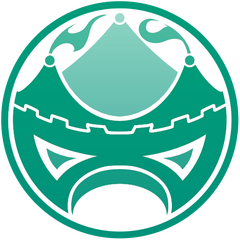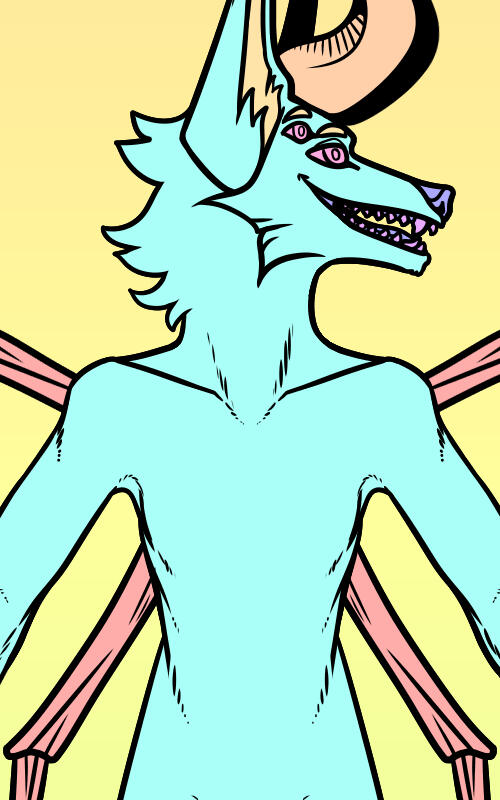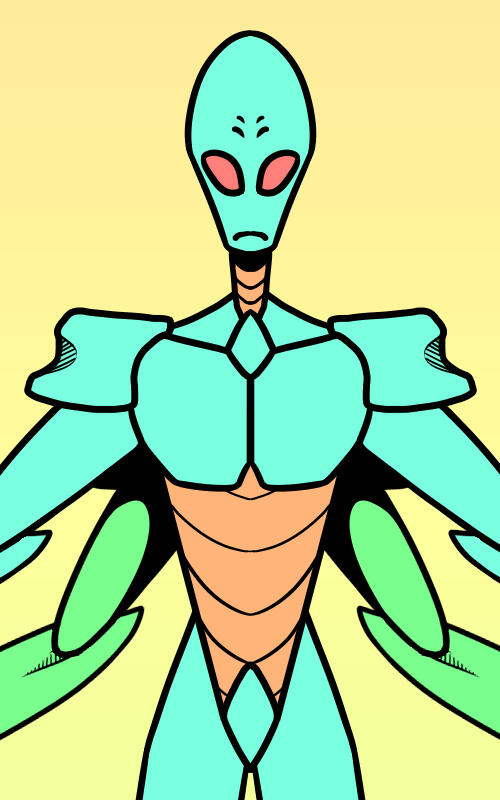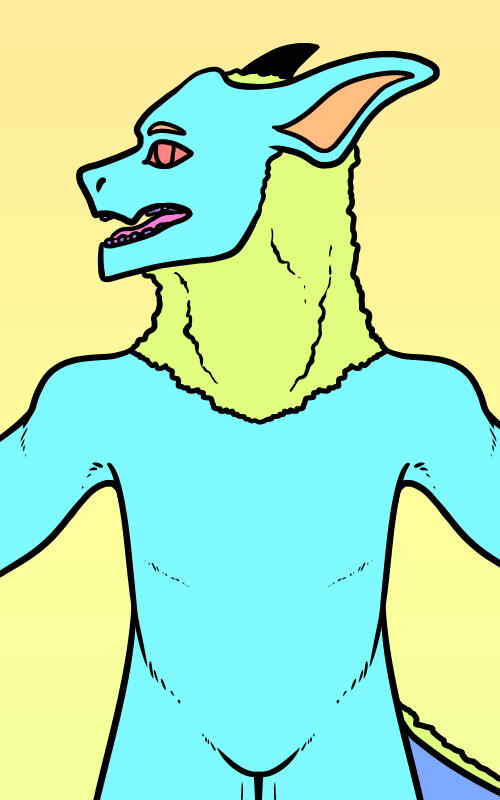NOTICE: This website & the first book are still a work in progress! Join our Discord to know when we officially go live!
◦▹ SPECIES ◃◦
✶ AKAARA ✶
◦▹ ARCHAE ◃◦
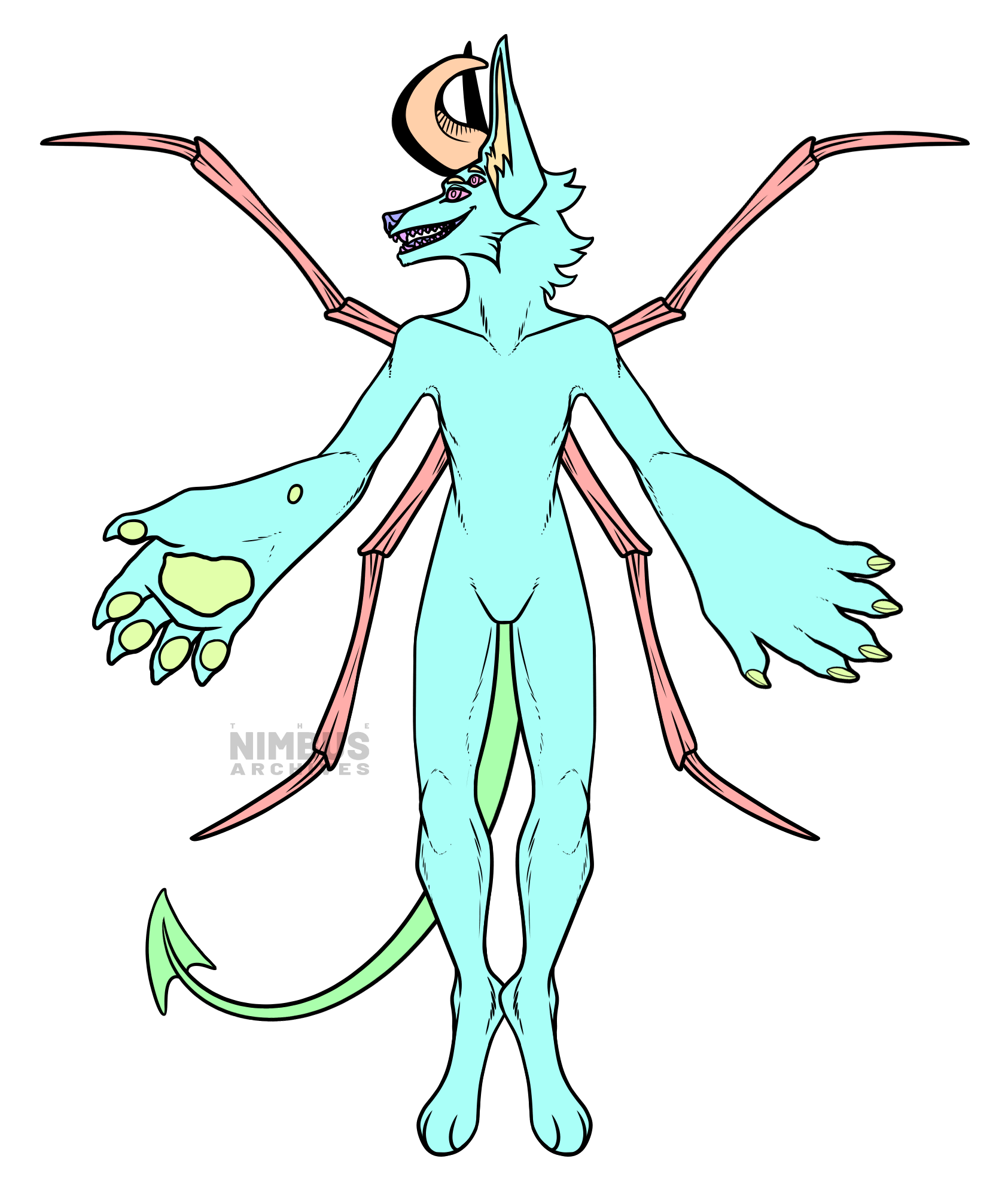
Want to create your very own original ARCHAE character? Click the 'DOWNLOAD' link below to get the .PSD file of the above image and colour/edit the base however you see fit!If you're not familiar with digital art, we recommend installing FireAlpaca or any other program that can open .PSD files.Remember to tag #noveltycircus if you post your character(s) so we can see your awesome work!
ANATOMY
Very tall & slender. The tallest Akaaran species.
High flexibility.
Relatively 'feminine' anatomy.
Shoulders naturally turn outwards, making their chest seem permanently puffed forward. Due to this, their arms hang slightly behind them rather than directly at their sides.
Relatively light in terms of average weight.
Generally move gracefully and confidently.
Sharp and serrated teeth.
Long and pointed tongue.
Primarily carnivorous, however they can eat plant matter - although too much of this will make them sick.
Two sets of eyes that cannot move independently of each other - whichever way one set of eyes is looking is the way the other set will also look.
Claws are non-retractable.
Tail is flexible but not prehensile.
Iider-limbs are made of a chitin-calcium mix that cannot self-repair. Because of this, archae are very cautious in making sure iider-limbs never get damaged.
Fur is long-ish, double layered and soft. Their undercoat helps keep them warm in cold climates, but in the heat of the
CHARACTERISTICS
Archae fur is usually lighter in colour and ranges from grey-blue to maroon to white. They frequently have one to two unnatural colours for their markings, horns, inner ears, and/or mouths.
Archae markings can appear in virtually any pattern, however they typically form to help the archae camouflage into their natural habitat.
Archae anatomy may have varying mane/cheek fur length, bone structure, height, and fat/muscle distribution, but typically they are built to be elegant and lightweight.
Any archae that varies from these 'design constraints' has either a RECOLOURATION, a MODIFICATION, a MUTATION, or a combination of the three.
LORE
One of the two original intelligent Akaaran species.
They share a distant common ancestor with the dreer.
First to accept the vrahl into Akaaran society. Ever since, the archae and vrahl peoples have had a fairly close bond.
They tend to be the manufacturers of any technology the vrahl require.
Have been significantly influenced by vrahl culture, most notably in the idea that horns are a symbol of status. A de-horned archae, irrespective of the events that lead up to them being de-horned, is considered a social outcast and shunned by their people.
Their hierarchy and the rituals they conduct to crown new leaders is one of the few things that remains untouched by vrahl customs. These practices are taken extremely seriously.
Archae are divided into fifteen 'Families' - different factions that encompass different pieces of territory across Akaara. What land an Archae is born on determines their Family, and therefore their allegiance.
Each Family is headed by a Noble, who inherits their position through birthright. Blood-related archae may challenge their Noble to a fight, in which case the winner will either remain as or become the new Noble.
Non-blood-related archae are prohibited from becoming a Noble unless the entirety of the former Noble's family dies out. In this situation, the strongest archae in the Family, after proving their strength through a series of inter-species fights, is named the new Noble.
The leader of all archae Families is called the 'Arch-Monarch', with their partner or partners simply referred to as 'Monarchs'. Monarchs are only considered a viable successor to the throne in the event the Arch-Monarch dies of natural causes.
An Arch-Monarch heads one of the fifteen Families. They may be challenged by any other Noble for their position as Arch-Monarch. This is a battle to the death, with the next in line in the loser's Family becoming the new Noble of that Family, and the winner either remaining as or becoming the new Arch-Monarch.
If an Arch-Monarch dies of natural causes and does not have any children or Monarchs to inherit the throne, the Nobles of each Family will convene and battle each other in a series of non-lethal fights to determine the strongest archae to become the new Arch-Monarch.
◦▹ DREER ◃◦
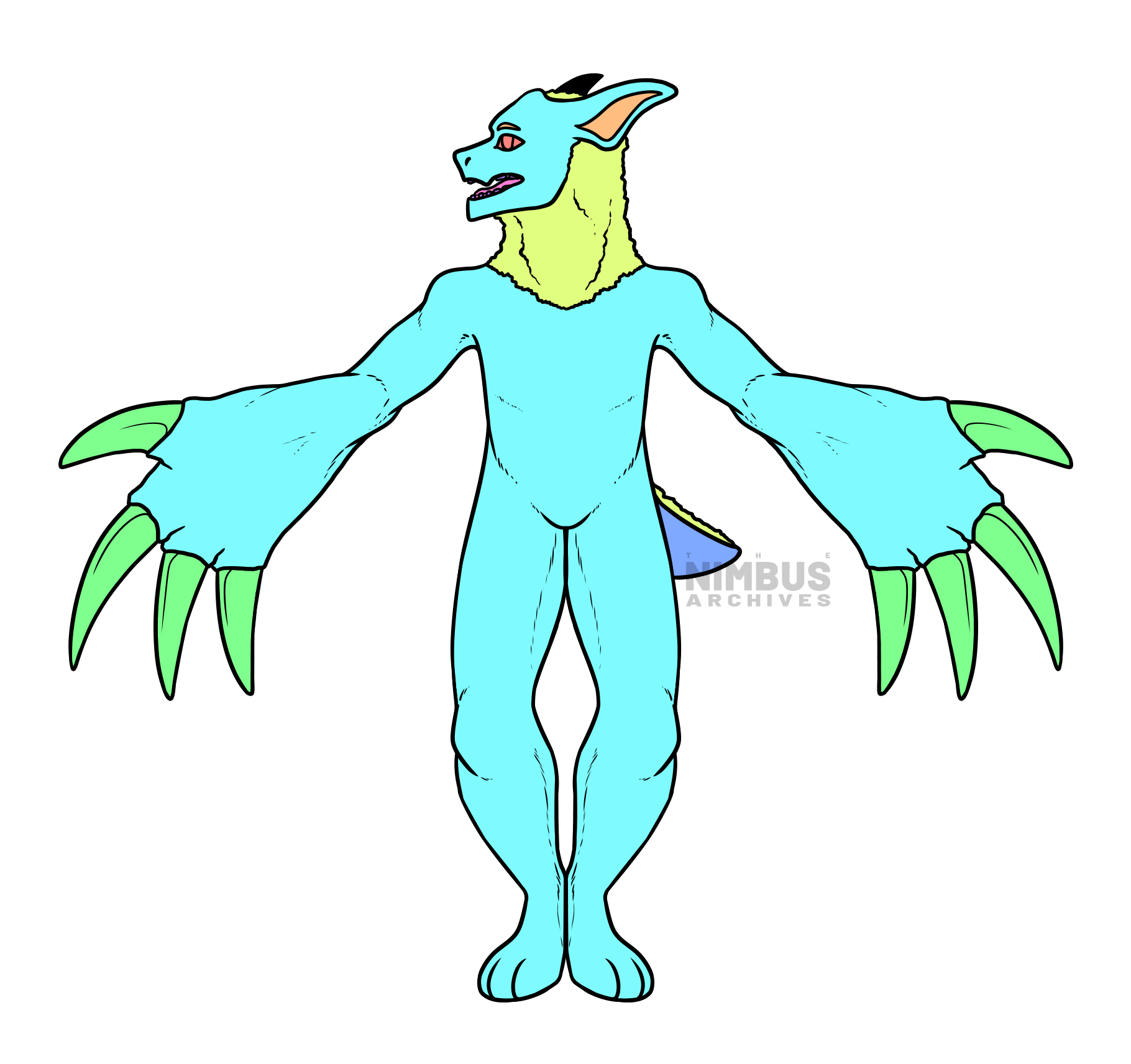
Want to create your very own original DREER character? Click the 'DOWNLOAD' link below to get the .PSD file of the above image and colour/edit the base however you see fit!If you're not familiar with digital art, we recommend installing FireAlpaca or any other program that can open .PSD files.Remember to tag #noveltycircus if you post your character(s) so we can see your awesome work!
ANATOMY
First item
Second item
Third item
CHARACTERISTICS
Dreer fur is typically darker in colour and only ranges through natural hues.
Any markings a dreer has are usually darker than its base coat colour.
Some dreer may have a more or less stocky frame and may be more or less hunched than other dreer, but they all share the same type of compact and rigid anatomy.
Any dreer that varies from these 'design constraints' has either a RECOLOURATION, a MODIFICATION, a MUTATION, or a combination of the three.
LORE
One of the two original intelligent Akaaran species.
They share a distant common ancestor with the archae.
Although they aren't outright hostile, dreer are generally reluctant and spiteful of the vrahl's existence in their society.
They tend to gravitate toward construction, mining, agriculture and livestock -based occupations.
Dreer are divided into five 'Clans', four of which are governed by 'Jarls' with the fifth governed by a 'Chieftain', who rules over all dreer.
Clans don't expect nor demand allegiance from their people. Clans are merely a way of specifying where a dreer lives and thereby what faction they are likely employed under.
The Chieftain position is one gained through demonstrations of strength, with any dreer eligible to challenge a Chieftain if they have: a) valid concerns over how a Chieftain is currently ruling their people, and b) the support of a Jarl.
Eligible challengers will engage in a one-on-one weaponless battle with the current Chieftain. Fights aren't mandated to be to the death, but it's not unheard of for dreer to refuse to surrender, thereby forcing a fatal outcome in the brawl. The winner either becomes or remains the Chieftain; the loser is prohibited from challenging the Chieftain again and returns to whatever life they were previously leading, typically being regarded with contempt by the general population.
Jarls may be challenged the same way a Chieftain can.
If a dreer challenges the Chieftain and wins, they become leader of the Central Dreer Clan irrespective of what Clan they originally came from and what position they may have previously had.
If the new Chieftain is a former Jarl, the Jarl title gets passed onto whichever dreer they had previously specified as their heir. This heir will usually have to prove their worth by engaging in multiple brawls with challengers for months after inheriting the Jarl title.
◦▹ VRAHL ◃◦
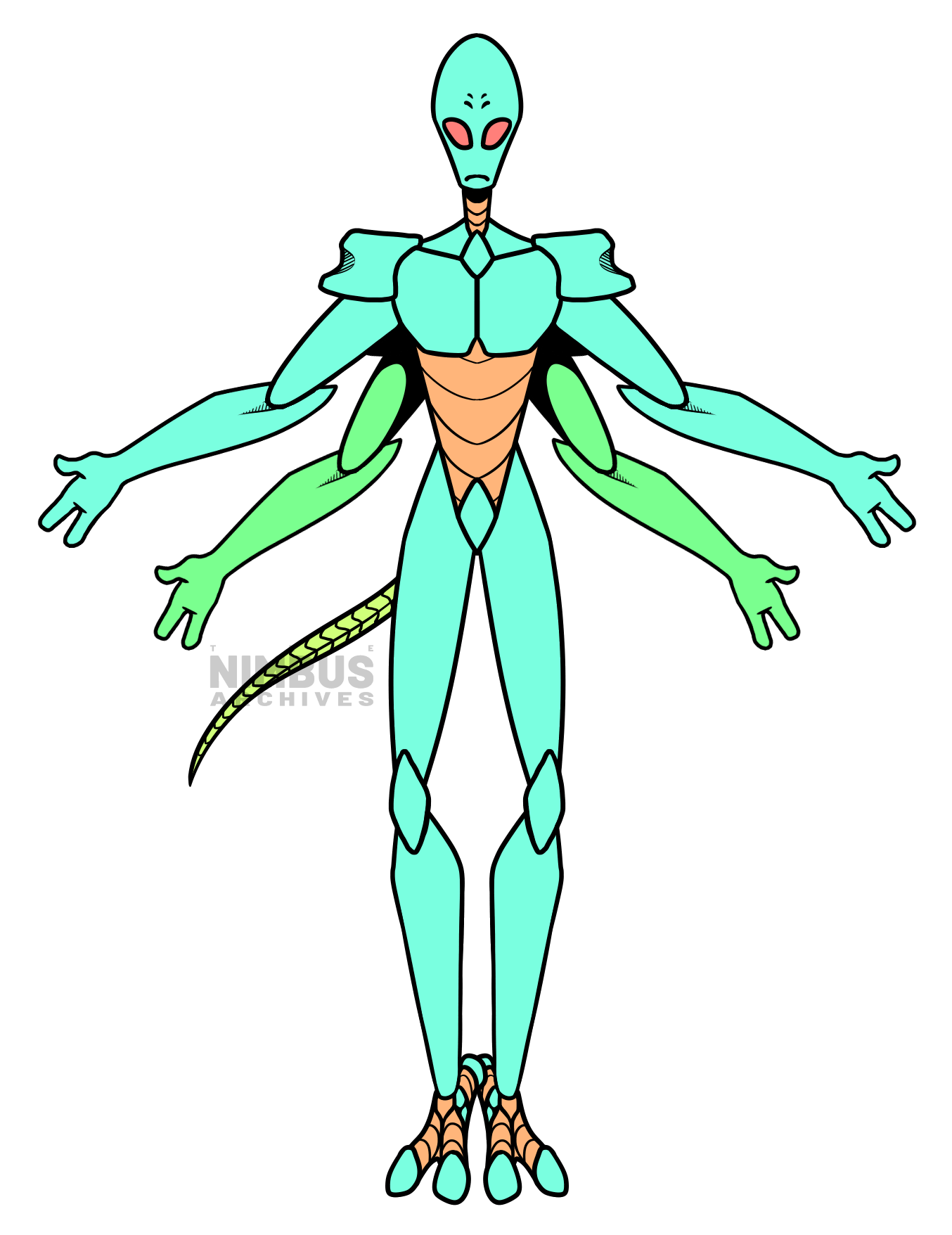
Want to create your very own original VRAHL character? Click the 'DOWNLOAD' link below to get the .PSD file of the above image and colour/edit the base however you see fit!If you're not familiar with digital art, we recommend installing FireAlpaca or any other program that can open .PSD files.Remember to tag #noveltycircus if you post your character(s) so we can see your awesome work!
ANATOMY
Second tallest species on Akaara, standing (on average) about half a head shorter than the Archae (excluding horn sizes for both species).
Their hard, segmented, carapace-like exoskeleton is near indestructible. They are impervious to everything except extreme temperatures and crushing force.
CHARACTERISTICS
Vrahl colours are muted and devoid of any bright hues.
Any markings a vrahl might have are very faint, hard to see, and don't usually have a clean-cut outline.
Vrahl do not have mutations, as any vrahl born with one is killed at birth for being 'defective'.
Vrahl anatomy is almost the exact same for every vrahl. The only notable difference is the shape and size of their horns.
Any vrahl that varies from these 'design constraints' has either a RECOLOURATION, a MODIFICATION, a MUTATION, or a combination of the three.
LORE
First item
Second item
Third item
